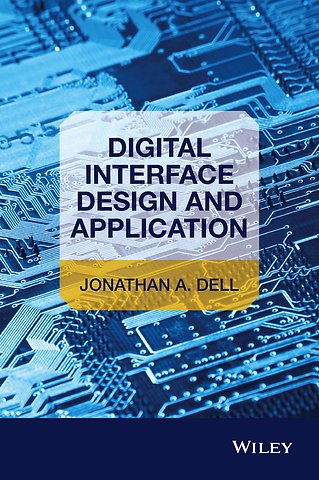Digital Interface Design and Application
Gebonden Engels 2015 1e druk 9781118974322Samenvatting
Many computer applications require microprocessors to reliably interconnect and communicate with other peripherals in order to perform their intended functions. Interface design, which includes the development of the methods and processes by which two or more components communicate, is a crucial step in the deployment of microprocessors in an embedded computing environment. ARM–based microprocessors are a leading technology in this field, offering a wide range of performance for different applications.
This book provides a comprehensive treatment of interface design from basic logical and theoretical principles to practical implementation on an ARM–based microprocessor, addressing both hardware and software considerations. The microprocessor’s high level of complexity is carefully analysed in the text to provide clear guidance for the reader in the design of new applications, resulting in an invaluable reference resource for graduates and engineers involved in the design of electronic products and systems.
Key Features:
- Brings together aspects of digital hardware, interface design and software integration in a single text to make clear the link between low and high level languages for interface control
- Categorises interface techniques into easily distinguished chapters, progressively involving greater complexity, enabling the reader to quickly find relevant material for a particular application
- Provides many practical C–coded examples showing both the preparation and use of complex programmable subsystems implemented in a typical commercial product
- Presents in each chapter an introduction to the essential theoretical aspects and the development of simple interface designs using basic logical building blocks
Specificaties
Lezersrecensies
Inhoudsopgave
U kunt van deze inhoudsopgave een PDF downloaden
List of Tables
Preface
1 Review of Digital Electronics and Computer Architecture
1.1 Embedded Systems
1.2 Software Architecture
1.3 Essential Basic Logic Elements
1.4 Output Configuration Options
1.4 1 Open Drain Configuration
1.5 The Address Decode
1.6 ARM Architecture
1.7 Interface Software Development
1.8 C Programming Revision
1.9 Conclusion
References
Further Reading
2 Simple Input and Output Functions
2.1 Introduction
2.2 Computer Structure
2.3 Simple Interface Circuit Concepts
2.4 Activation of I/O Circuits
2.5 Universal I/O Circuits
2.6 Practical I/O Circuits
2.7 A Typical I/O Programme
2.8 Suggested Design Challenge
2.9 Conclusion
References
Further Reading
3 Timer Subsystems
3.1 Timer Subsystems
3.2 Basic Timer Configuration
3.3 The STM32F4 Timers
3.4 Programming the STM32F4 Timers
3.5 Timer Triggering
3.6 Basic Timers
3.7 PWM Applications
3.8 Programming Challenge
3.9 Conclusion
References
4 Analogue Interface Subsystems
4.1 Analogue Interfaces
4.2 Digital to Analogue
4.3 Analogue to Digital Conversion
4.4 Software Control of DAC
4.5 Software Control of ADC
4.6 Programming Challenge
4.7 Conclusion
References
Further Reading
5 Serial Interface Subsystems
5.1 Introduction
5.2 RS232 Universal Asynchronous Receiver/Transmitter (UART) Communications
5.3 The I2C Interface
5.4 SPI Interface
5.4.1 SPI Interface to an Analogue to Digital Converter
5.5 HDLC Serial Communication
5.6 The Universal Serial Bus (USB)
5.7 Programming Challenge
5.8 Conclusion
References
6 Advanced Functions
6.1 Advanced Functions
6.2 Interrupts
6.3 Direct Memory Access (DMA)
6.4 The LCD Display Module
6.5 The Wireless Interface Module
6.6 Digital Camera Interface
6.7 Conclusion
Further Reading
7 Application Case Study Examples
7.1 An Open-Loop Digital Compass
7.2 The MSF Time Decoder
7.3 Decoding GPS Signals
7.4 Conclusion
References
Appendix A: uVision IDE Notes
A.1 Getting Started
A.2 Help
A.3 Project Development
A.4 Debug Facilities
A.5 Conclusion
Appendix B: STM Discovery Examples Library
B.1 Peripheral Examples
B.2 Example Application
Appendix C: DAC and ADC Support Software
C.1 DAC Peripheral Features
C.2 How to Use the DAC Driver
C.3 ADC Peripheral Features
C.4 How to Use the ADC driver
C.5 Files for Reference
Appendix D: Example Keyboard Interface
Index
Anderen die dit boek kochten, kochten ook
Rubrieken
- advisering
- algemeen management
- coaching en trainen
- communicatie en media
- economie
- financieel management
- inkoop en logistiek
- internet en social media
- it-management / ict
- juridisch
- leiderschap
- marketing
- mens en maatschappij
- non-profit
- ondernemen
- organisatiekunde
- personal finance
- personeelsmanagement
- persoonlijke effectiviteit
- projectmanagement
- psychologie
- reclame en verkoop
- strategisch management
- verandermanagement
- werk en loopbaan







